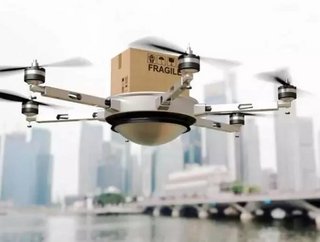Can drones be taken seriously in the supply chain?

Drones have the potential to revolutionise supply chain and logistics, so much so that behemoths Amazon and Walmart have already been trialling warehouse and home delivery projects for well over a year.
It is expected that drones will speed up and reduce costs associated with traditional supply chains, deliver an additional source of data gathering and provide added convenience because they are not restricted to postcodes.
From a technology perspective, the capabilities of drones are improving day by day – advancements in autonomous piloting, ‘sense and aware’ technologies and increased battery life mean that delivery drones are now very much a potential for the future.
However, a lot of preparation is still needed before drone delivery in everyday supply chains becomes feasible. Before drones can be commercialised, we will need concrete legislation that outlines parameters of how they can be used. Only once an enabling policy framework is in place can the drone market fully develop.
The UK is slightly ahead as certain guidelines around the use of drones already exist; the Civil Aviation Authority’s ‘The Drone Code’ requires drones to be flown in direct visual line of sight of the pilot; away from congested areas, aircrafts and airports; at least 50 metres from people, vehicles and structures; and under 400 feet.
These stipulations, alongside other barriers such as current 20 kilogram weight limits, fears over hacking and adverse weather, mean that drones are not commercially viable just yet. There is also concern over whether drones will be used to complement existing jobs in the supply chain or replace them outright.
Despite some stumbling blocks, the market is projected to reach $5.59 billion by 2020. To make these expectations a reality, it is likely the government will call for companies to register to operate drones and that organisations will need to prove they have a strategy in place that complies with legislation.
As drones show promise to be the next disruptive technology within the supply chain, businesses would do well to start investigating strategies now to see if they would fit their business model. My advice is to start seeking help from experts to understand the technological challenges, practicalities and limitations of using drones as part of your supply chain processes before dismissing altogether or indeed going all in too quickly.
Trish Young is UK Head of Business Consulting – Retail, Consumer Goods, Travel & Hospitality at Cognizant
Supply Chain Digital's July issue is now live.
Follow @SupplyChainD and @MrNLon on Twitter.






